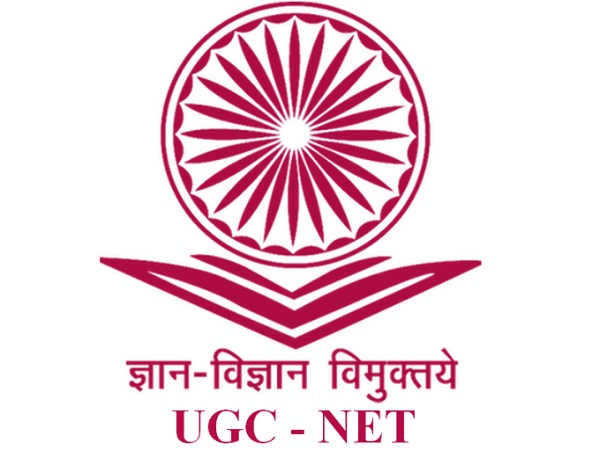Introduction
The National Eligibility Test (NET) is administered by the UGC on a national basis to select eligible candidates to be considered for Junior Research Fellowship (JRF) and Assistant Professor positions in several colleges across India.
So, passing this UGC NET exam presents a excellent career path for those who are driven to research and teach as a professor at schools.
The primary main reasons which make UGC NET exam feature as one of the top competitive examinations in the nation is the high difficulty level and extensive range of topics.
To pass an exam, the initial step for candidates is to be well-informed on the syllabus and the pattern of the examination.
A thorough understanding of the syllabus as well as the exam format helps understanding the most important subjects to cover. It also gives you with an idea of the structure of the test.
In this regard I will go over details about certain of the most important aspects of UGC NET which includes the syllabus and exam pattern. This article you'll find all the information you need about the most recent NTA UGC NET syllabus for paper 1 and paper 2 as well as the revised exam pattern.
UGC NET Paper 2 Commerce Syllabus
The syllabus for the subject of commerce is extensive and thorough.
If you're preparing for the UGC NET December 2023 exam that has commerce as paper 2. I have laid the 10 subjects of the syllabus in a comprehensive way:
1. Unit: Business Environment and International Business
- Concepts and components of the business environment The economic environment- Economic systems and policy (Monetary as well as fiscal policy) Political environment - The role of the government in business; Legal environment Consumer Protection Act, FEMA Social elements and their impact on business Corporate Social Responsibility (CSR)
- Scope and significance of globalization in business; its driving factors; modes of entering into International business Scope and importance of international business The importance of international business
- International trade theories; government intervening in trade Non-tariff and tariff barriers; India's foreign trade policy 2. 2
- Direct investment from foreign countries (FDI) and foreign Portfolio Investment (FPI) The types of FDI, the costs and benefits FDI brings to the host and home countries; FDI trends as well as India's FDI policies.
- BOP: Balance of Payments (BOP) The importance and BOP components Balance of payments (BOP): Importance and components
- Regional Economic Integration Different levels of Economic Integration in the Regional Region Diversion and trade effects Regional Trade Agreements: European Union (EU), ASEAN, SAARC, NAFTA
- International Economic institutions: IMF, World Bank, UNCTAD
- World Trade Organization (WTO) The WTO: Functions and Objectives of the WTO; Agriculture Agreement; GATS, TRIPS, TRIMS
2. Unit: Accounting and Auditing
- Accounting fundamentals Postulates, concepts and concepts Basic accounting principles, concepts and postulates
- Partnership Accounts for Admission, Retirement Dissolution, Death and Insolvency of partnership companies Partnership firms
- Corporate Accounting Issue, forfeiture and the reissuance of shares Liquidation of businesses; Acquisition merger, amalgamation, and reconstruction of businesses Corporate Accounting: Issue, forfeiture and reconstruction of companies
- Holding company accounts
- Cost and Management Accounting: Marginal Costing and Break-even analysis Costing standard; budgetary Control Costing of processes; Activity-Based Costing (ABC) Costing for making decisions Costing of life cycle, Kaizen costing, target costing, and JIT
- Analyzing Financial Statements Ratio analysis; Funds Flow Analysis and Cash flow analysis analysis of cash flow
- Human Resources Accounting; Inflation Accounting; Environmental Accounting
- Indian Accounting Standards and IFRS Indian Accounting Standards and IFRS
- Auditing Independent financial audit; Vouching; Verification of ad valuation of liabilities and assets Audit of the financial statements and audit report Audit of cost Auditing: Independent financial audit; Voucher; Cost audit
- Current Trends in Auditing Audit of management Audit of Energy Audit of Environment Systems audit; and Audit of safety
Unit 3 Business Economics
- Definition and nature of economics in business Meaning and scope of business economics
- Goals of business companies Objectives of business firms
- Demand Analysis: Law of Demand elasticity and its measurement and relationship to AR and MR Demand analysis: Law of demand; Elasticity of demand and its measurement; Relation
- Consumer behavior Utility analysis Analysis of the infference curve analysis of the infference curve
- Law of Variable Proportions The Law of Returns on Scale 3.
- Theory of Cost The short-run and the long-run costs curves Cost curves for both long and short-run Cost curves for both long and short-run HTML2
- Price determination in various markets Monopolistic competition OligopolyPrice leadership model Monopoly price discrimination The model is a price discrimination system.
- Pricing strategies: Price skimming; Price penetration; Peak load pricing
4. Business Finance
- The scope and the sources for financing Finance for leases Lease financing
- Capital costs and the time value of money The cost of capital and the value of time
- Capital structure
- Capital budgeting decision-making The use of scientific and conventional methods for analysis of capital budgets
- Management of working capital Dividend determination Theoretical and policy
- Risk and return analysis; Asset securitization
- International monetary system
- Market for foreign exchange Risks of exchange rates and strategies for hedging The
- International financial instruments and markets: Euro currency; GDRs; ADRs
- International arbitrage; Multinational capital budgeting
Unit 5 Business Research Methods and Statistics
- The measures of the central tendencies Measures of central tendency
- The measures of dispersion Measures of dispersion
- Measures of Skewedness Measures of skewness
- Two variables are correlative and one is regression. Two variables
- Probability: Methods for calculating probabilities; Bayes' theorem
- Probability distributions: Binomial and poisson as well as normal The normal and binomial distributions are also included.
- Research: Conceptual and types; research Designs Research: Concepts and types; Research designs
- Data The collection and classification of information The Data: Collection and classification of data
- The concept of estimation and sampling Concepts; Methods for sampling Methods for nonprobability and probability sampling distribution The Central Limit Theorem Standard error; statistical estimation
- Tests for hypotheses: z test; t test ANOVA; Chi-square tests and Mann-Whitney Test (Utest) Test Kruskal-Wallis (H-test) Test for rank test of correlation Test for Rank Correlation
- Report writing
6. Unit: Business Management and Human Resource Management
- Principles and roles of the management system 4 Principles and functions of management 4
- Structure of organization: formal and informal organisations; Span that is controlled The Span of Control
- Authority and responsibility decentralization and delegation of authority decentralization of authority
- Leadership and motivation: Conceptual and theoretical theories Theoretical and Conceptual
- Corporate governance and ethics in business Corporate governance and ethical business practices
- Human Resource Management: Conceptual function and role of HRM Planning for human resources; recruitment and selection; training and development Planning for success Planning for Succession
- Employment management: job evaluation Incentive along with fringe and other benefits The role of compensation management is to evaluate job performance, incentives and fringe benefits.
- Performance appraisal including 360 degree performance appraisal
- Collective bargaining and workers' participation in management
- Persona: perception Attitudes, Emotions, group dynamics; power and negotiations; Conflict and conflict Management of stress Management of stress
- Organizational Culture: Organizational development and organizational change
7. Unit: Banking and Financial Institutions
- Overview of Indian financial system
- Types of banks: Commercial banks; Regional Rural Banks (RRBs); Foreign banks; Cooperative banks
- Reserve Bank of India The role of the Reserve Bank of India, its functions and Management of Monetary Policy Functions; Role and management of monetary policy
- Banking sector reforms in India: Basel norms; Risk management; NPA management
- Financial markets: Money market; Capital market; Government securities market
- Financial Institutions Development Finance Institutions (DFIs); Non-Banking Financial Companies (NBFCs); Mutual Funds; Pension Funds The Pension Funds
- Financial Regulators in India
- Financial sector reforms including financial inclusion
- Digitalisation of banking and additional financial products: Internet banking; mobile banking; digital payments systems
- Insurance Types of Insurance Life and Non-life insurance Classification and Management of Risk factors that limit the insurability of risk Re-insurance; Regulatory framework for insurance - IRDA and its function
8. Unit: Marketing Management
- Marketing: Conceptualization and methods marketing channels and mix of marketing Marketing strategy Marketing segmentation, targeting, and positioning positioning and segmentation.
- Product decisions: Concept; Product line; Product mix decisions; Product life cycle; New product development
- Pricing decisions: Factors that affect pricing decisions Policies and strategies for pricing 5 5
- Promotional decisions: The role of marketing promotion; Methods of promotion - advertising; personal selling and public relations; Sales promotion methods and tools Mix of promotion Mix
- Distribution decisions: Channels of distribution; Channel management
- Consumer Behaviour; Consumer buying process; factors influencing consumer buying decisions
- Service marketing
- Trends in marketing: Social marketing; Online marketing; Green marketing; Direct marketing; Rural marketing; CRM
- Logistics management
Unit 9 The Lawful Aspects of Business
- Indian Contract Act, 1872: The elements that constitute a contract valid Parties' capacity; Free consent; discharge of a contract; breach of contract, and remedies for breach; Quasi contract;
- Special contracts for indemnity and guarantees; bailment contracts and pledge; Agency contracts
- Sale of Goods Act 1930, Sale of Goods Act and contract to sell Doctrine of Caveat Emptor and rights of sellers who have not paid and the rights of buyers rights of buyer
- Negotiable Instruments Act 1881: Different types of negotiable instruments, Negotiation or assignment. Dishonour, and discharge of instruments that are negotiable.
- The Companies Act, 2013: Types and nature of companies; Company creation Management meetings, winding up and closing of an incorporated jointly-owned company The Companies Act, 2013: Management, meetings and winding up of a joint
- Limited Liability Partnership Structure, and method for forming an LLP within India In India
- The Competition Act, 2002: Goals and principal provisions The Competition Act, 2002: Objectives and main provisions
- HTML0 is the Information Technology Act, 2000 The Act's objectives and principal provisions Cyber-crimes and penalties
- RTI Act, 2005: The main objectives and clauses Intellectual Property Rights (IPRs) Patents, trademarks and copyrights; New problems in the field of Intellectual Property
- Goods and Services Tax (GST) Goals and major rules; benefits of GST Implementation mechanism; Dual GST The GST: Objectives and main provisions; Working of dual GST
Unit 10: Income tax and Tax planning for corporations
- Income-tax: The basic concepts; residential status and tax burden Tax exempted incomes; Agricultural income; calculation of tax-deductible income for various categories deductions from gross total income and Assessment of Individuals. clubbing of earnings
- International Taxation Double taxation and its mechanism to avoid it Pricing of transfer 6 HTML2
- Corporate Tax Planning: The Concepts, and the importance of tax planning for corporate entities Tax avoidance and tax evasion, techniques of corporate tax planning Tax considerations for specific circumstances in business making buy or make decisions; own or lease an asset; Hold the asset; renew or replace the asset; Close down or continue to operate Continue operations Continue operations
- The deduction and tax collection at source Advance tax payment E-filing of tax return.
Conclusion
We have now reached the conclusion of the segment. We have talked in depth about UGC NET syllabus and exam format for Paper 1 and Paper 2. I hope that you find this comprehensive information about the subjects helpful in the exam preparation. I'll now take my sphere and wish you good success in your future endeavors.
Best of luck! !
Keep Learning! !


No comments yet